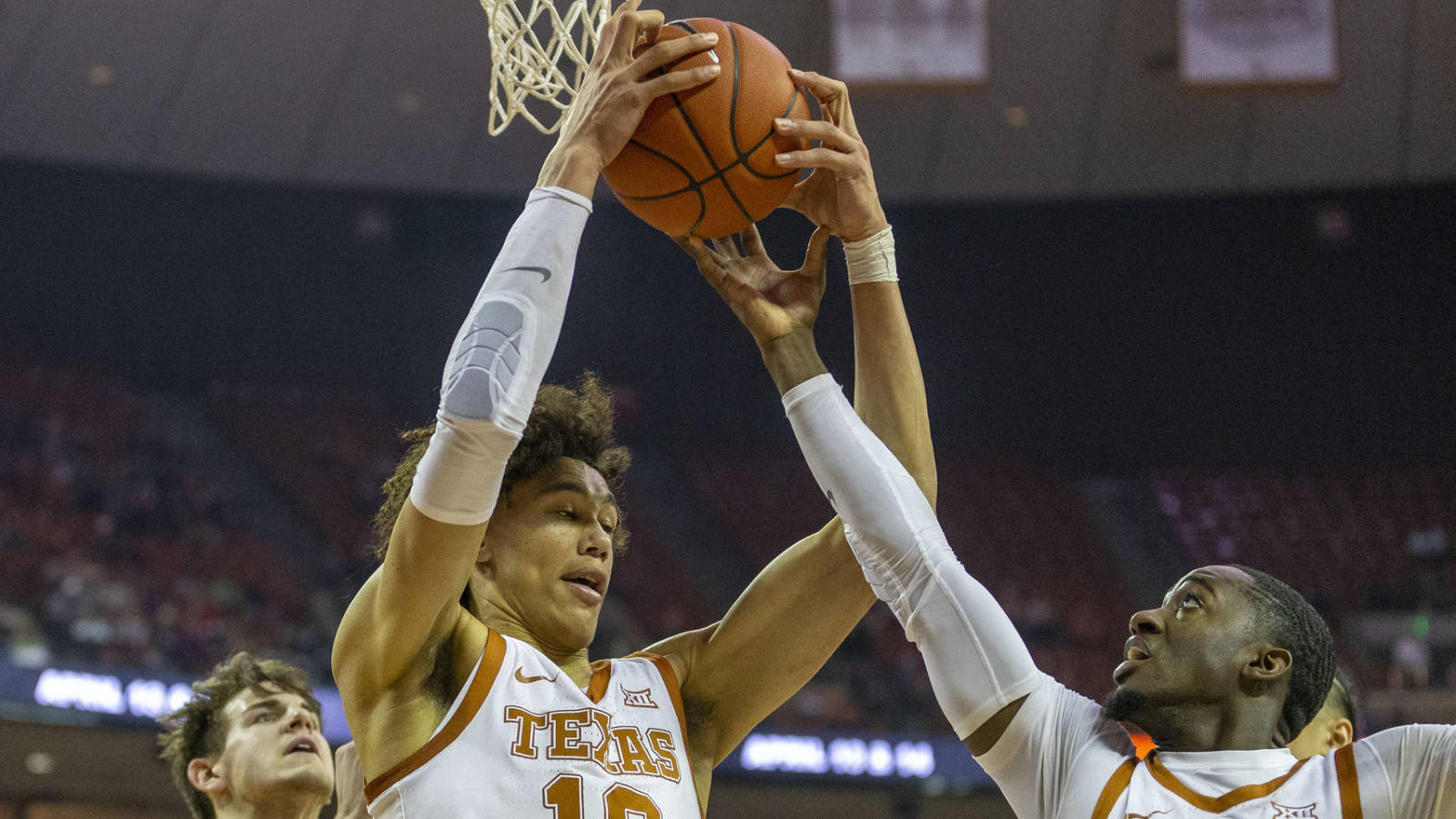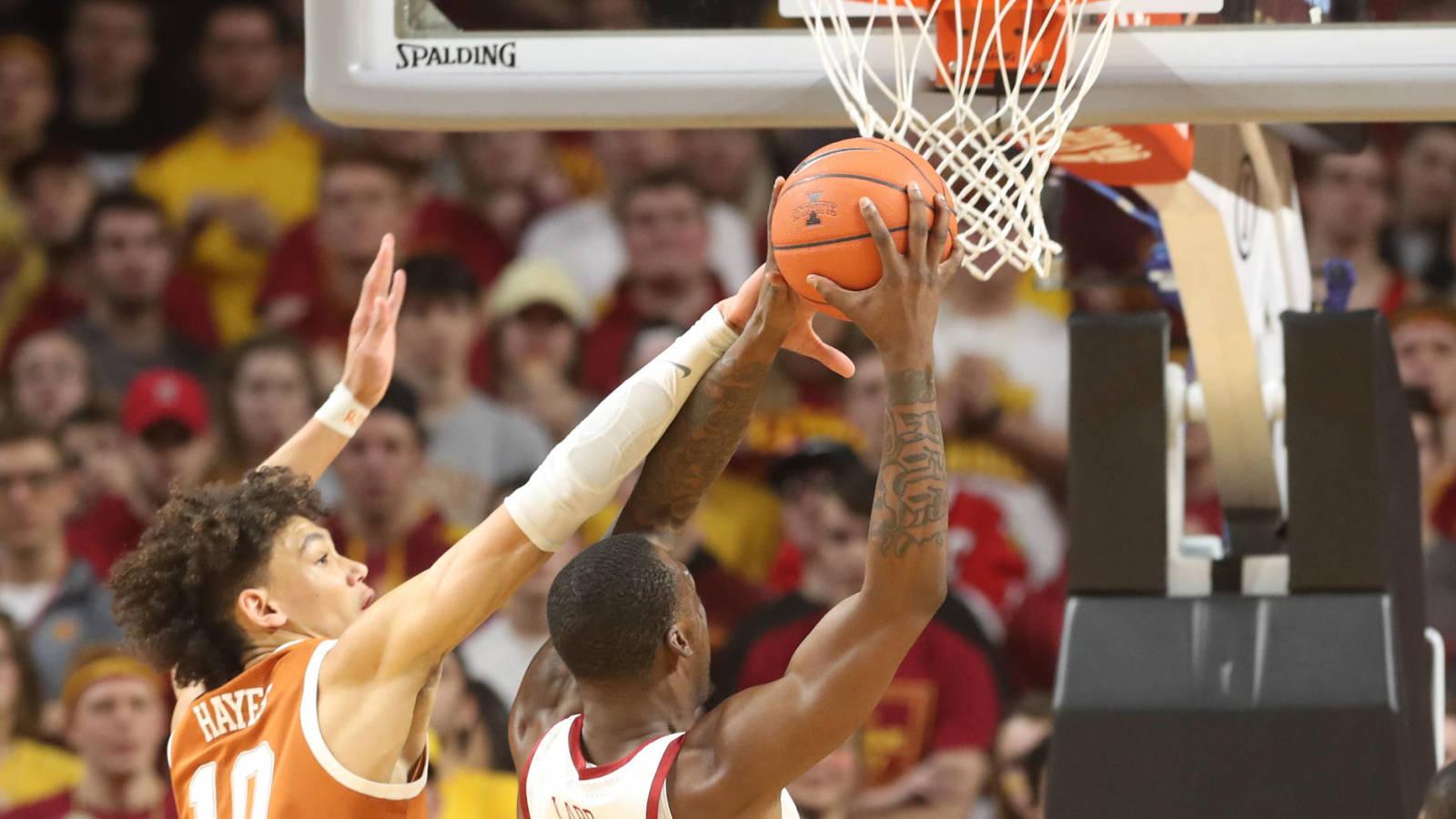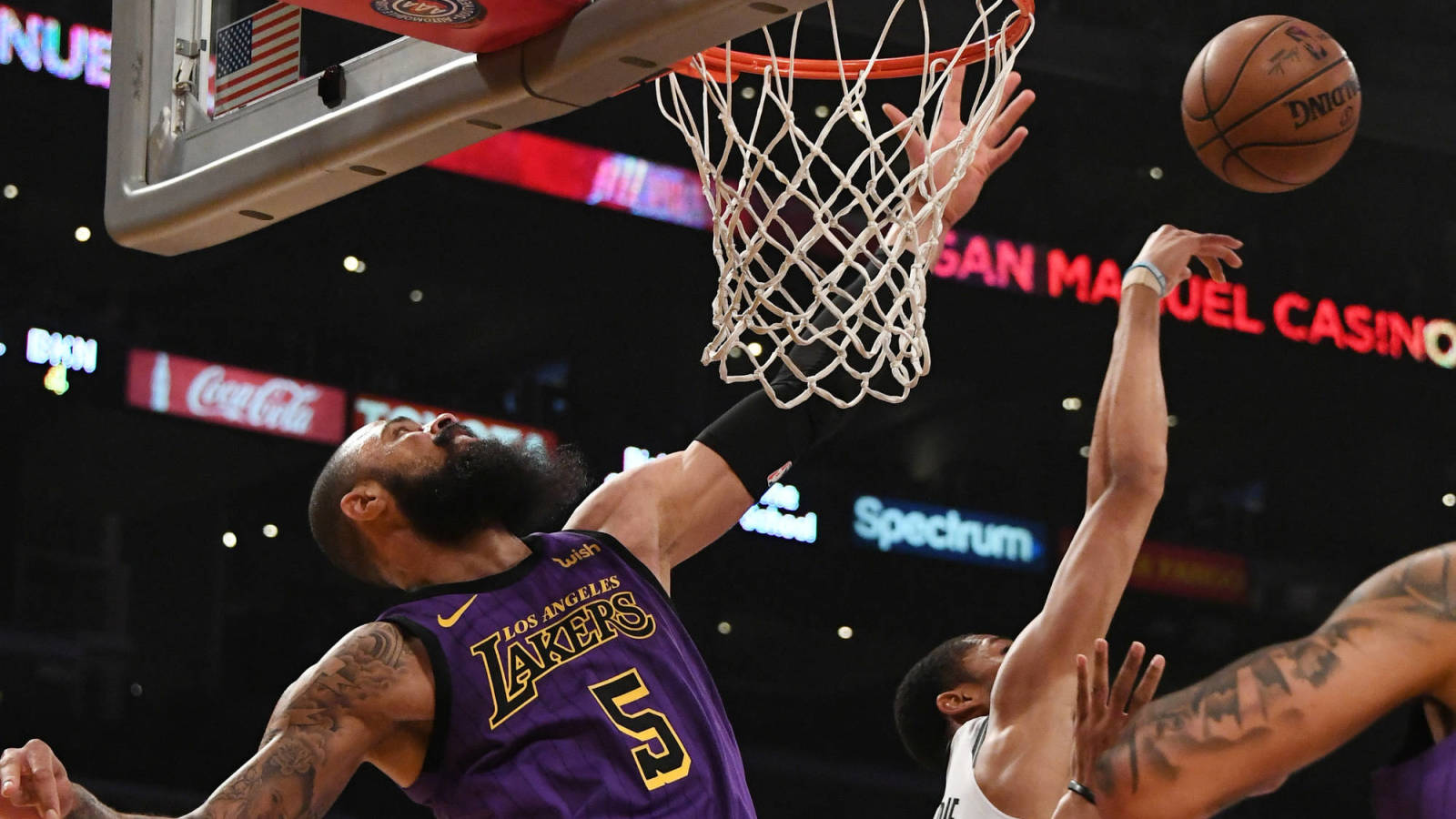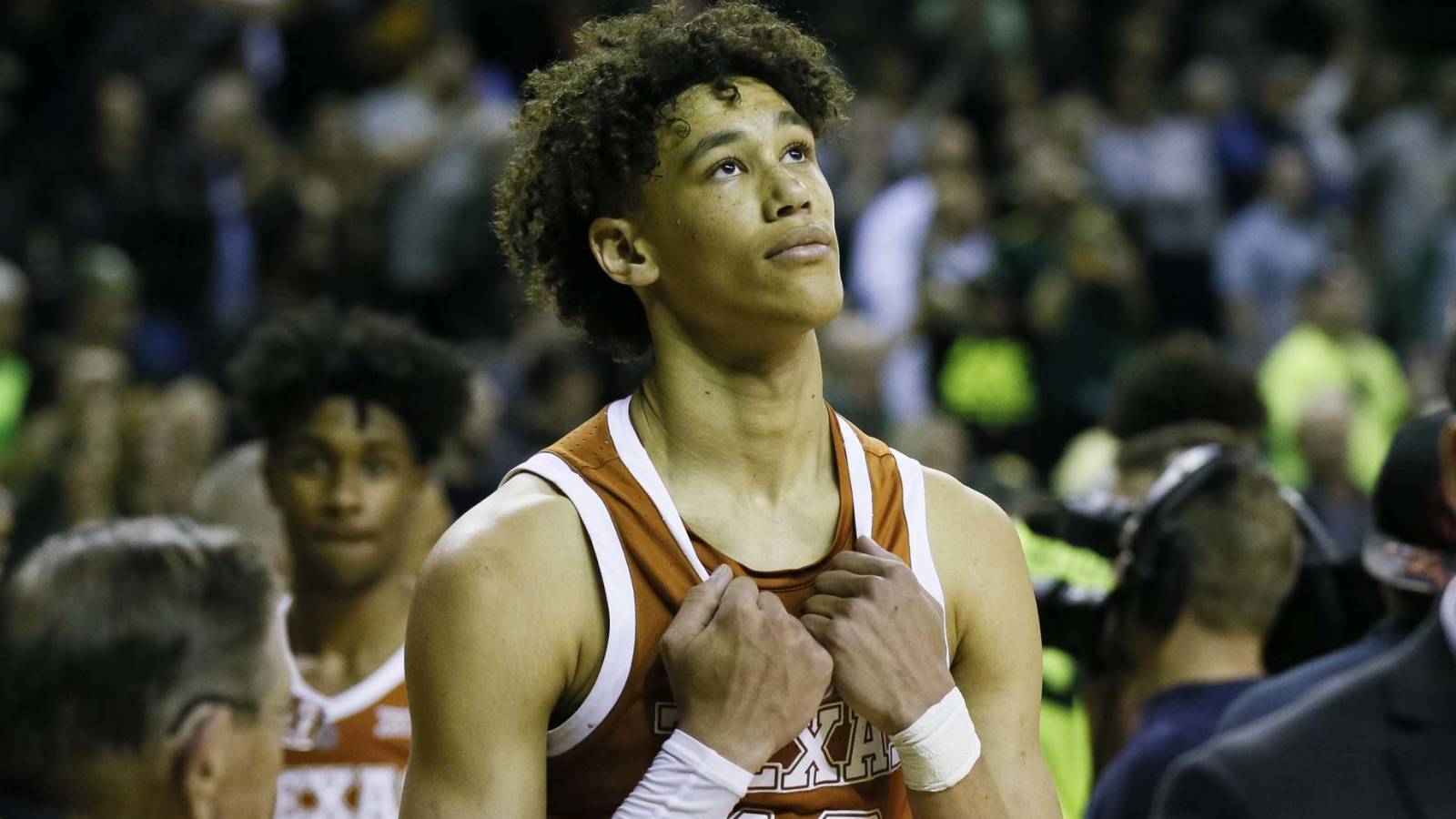
Analyzing Texas' Jaxson Hayes, the No. 5 NBA Draft prospect
Yardbarker NBA draft analyst Brett Koremenos offers in-depth assessments of the top-five prospects leading into the draft on June 20. Here's his analysis of Texas' Jaxson Hayes, Yardbarker's No. 5 draft prospect.
All prospect reports: No. 1: Zion Williamson | No. 2: Ja Morant | No. 3 Darius Garland | No. 4 De'Andre Hunter | No. 5 Jaxson Hayes | More NBA Draft coverage
DRAFT NIGHT AGE: 19
HEIGHT: 6-11 | WEIGHT: 220 | WINGSPAN: 7-3
2018-19 RAW NUMBERS (totals per game)
G MIN PTS REB BLK AST TO
32 23.3 10.0 5.0 2.2 0.3 0.9
His Game
A late bloomer who didn’t even start every game for a middling Texas team, Hayes is a quintessential “dive man.” His greatest value to the Longhorn offense in 2018-18 was his ability to quickly get out of pick-and-rolls and be on top of the rim before rotating help defenders knew what was happening. Though Hayes posted solid post numbers, 1.05 points per possession (PPP), those too were mostly a result of sealing recovering defenders near the basket after setting a pick rather than straight post catches.
Hayes was definitely a one-dimensional player when it came to his range. Though Synergy Sports Technology credits him with three “jump shots,” all three shots were still inside the paint. Hayes never attempted a three-point attempt nor did much of anything with the basketball on the perimeter.
Defensively, he flashes the ability to an elite defender. Hayes can rotate off his man and block shots with the best of them, plays with good effort, and has the movement efficiency to switch onto smaller players and hold his own. The biggest drawback defensively is his frame and general lack of strength.
At just 18, Hayes is nowhere near the mature, physically stable man who he will encounter in the NBA. A huge part of Hayes’ development will be linked to his physical maturation.

Number That Matters: 16.3%
Devontae Cacock of UNC-Wilmington led the NCAA in 2018-19 with a defensive rebounding percentage of 34.3 percent. At just 16.3 percent, Hayes checks in at nearly half that mark -- good for 507th place among all bigs in Division I basketball. On the surface, a big man who can’t rebound opponents’ misses seems primed to disappoint the team that selects him. The saving grace for Hayes might be the rise of smart analytics departments around the NBA.
Raw rebounding numbers are actually quite misleading. As we learn more about the game, the important figure isn’t how a player rebounds the ball individually, but how his team does when he’s on the floor. Analytics staffers around the NBA could be using their number-crunching power to see if the inability of Hayes to hoover up missed shots for himself actually caused Texas as a team to give up more offensive rebounds when he was on the floor. (That data set that isn’t available to the public.) So keep that in mind when hearing about Hayes’ rebounding deficiencies. His rebounding skill is not ideal, but it may not necessarily be a fatal flaw in his game.

Number To Ignore: 3.8
Even just 10 years ago, blocks were considered a sure sign of elite rim protection. At 3.8 blocks per 40 minutes, Hayes was one of the best in college basketball at swatting shots last season. But putting a heavy emphasis on the young big man’s rim protection loses sight of the changing responsibilities for centers in the NBA. The ability to switch onto smaller players and guard in space has become far more valuable from a big man than blocking shots. Although players like Rudy Gobert stay perched near the rim to alter opponent’s shots near the basket, nimble big men like Clint Capela can gum up offenses just as effectively, albeit in a much different way.
Like Capela, Hayes may bring as much if not more value being a “switchable” big than one who just lurks near the paint looking to block shots. So while Hayes’ shot-blocking numbers are effective, the stat is becoming increasingly irrelevant in the NBA’s shifting defensive landscape.

His Comps: Tyson Chandler
Although it’s easy to label Hayes something of a one-trick pony, at least offensively, his one trick is pretty damn valuable. Chandler came into the NBA straight from high school with roughly the same measurables and general skill set. All Chandler did was go on to have a 19-year NBA career that included a championship (2011), All-Star appearance (2013) and Defensive Player of the Year Award (2012).
Like Chandler, Hayes must establish himself as a defensive presence and constantly put pressure on the rim on the other end of the floor. Even though Chandler never transitioned to three-point territory, the threat of him catching and dunking lobs off rolls or while lurking the baseline opened space for every team he was on. Hayes must remember that having that same effect while being an attuned defender will be his bread and butter.

Building a skill set
For his first season, Hayes should simply look to get up to speed with the NBA game. Learning coverage calls, being vocal and understanding help responsibilities are incredibly difficult for any rookie, much less a 19-year old big man who only started 21 of the Longhorns' 32 games.
Offensively, Hayes would be wise to work on non-rim finishes he can use when his path to the rim for a dunk on a roll or cut is blocked by a rotating defender. Little touch/float shots, plus finishes involving controlling his body around a defender planted for a charge, would benefit him greatly.
Hayes should prioritize his ball-handling, but not in the way you associate with a guard. Big men don’t need flashy moves, but they do need a tight handle to be proficient in certain areas of the floor. For Hayes, that means being able to put the ball on the floor off quick passes earlier on the roll (instead of being limited to just catching lobs at the rim), as well as catching from the trail spot and either attacking the big or deftly moving into hand-offs to teammates lined up on the perimeter.
Hayes obviously must develop a workable jump shot from beyond the arc. That will be a huge boost to his value given the three-point craze in today’s NBA.
Best-case scenario
The rebounding issues turn out to be nothing as Hayes’ teams suffer no drop-off in rebounding due to his overall energy and attentiveness to walling off bodies when opponents miss shots. If Hayes is able to incorporate the ability to attack from all levels on the roll with a three-point shot, he will be one of the more versatile threats at the center in the NBA. Should that combine with improved awareness and an emphasis on becoming a disruptive, “switchable” big, Hayes will play in many All-Star games.
Worst-case scenario
The poor rebounding numbers lead to the units Hayes anchors hemorrhaging offensive rebounds and, in turn, more points. He fails to improve his handle or jumper and remains strictly a “dive guy” until his athleticism gives way. The defensive awareness never improves and Hayes relies too much on just chasing blocked shots rather than perimeter players on switches. This worst case probably still has Hayes being a long-time NBA player, but probably not one who cracks the rotations of good teams.
More must-reads:
- One-on-One: NBA Draft lottery winner (duh!), losers, 'Brow' sweepstakes
- Bulls may still have interest in Lonzo Ball
- The 'Most points in a playoff game by team' quiz
Breaking News
Customize Your Newsletter
 +
+
Get the latest news and rumors, customized to your favorite sports and teams. Emailed daily. Always free!

